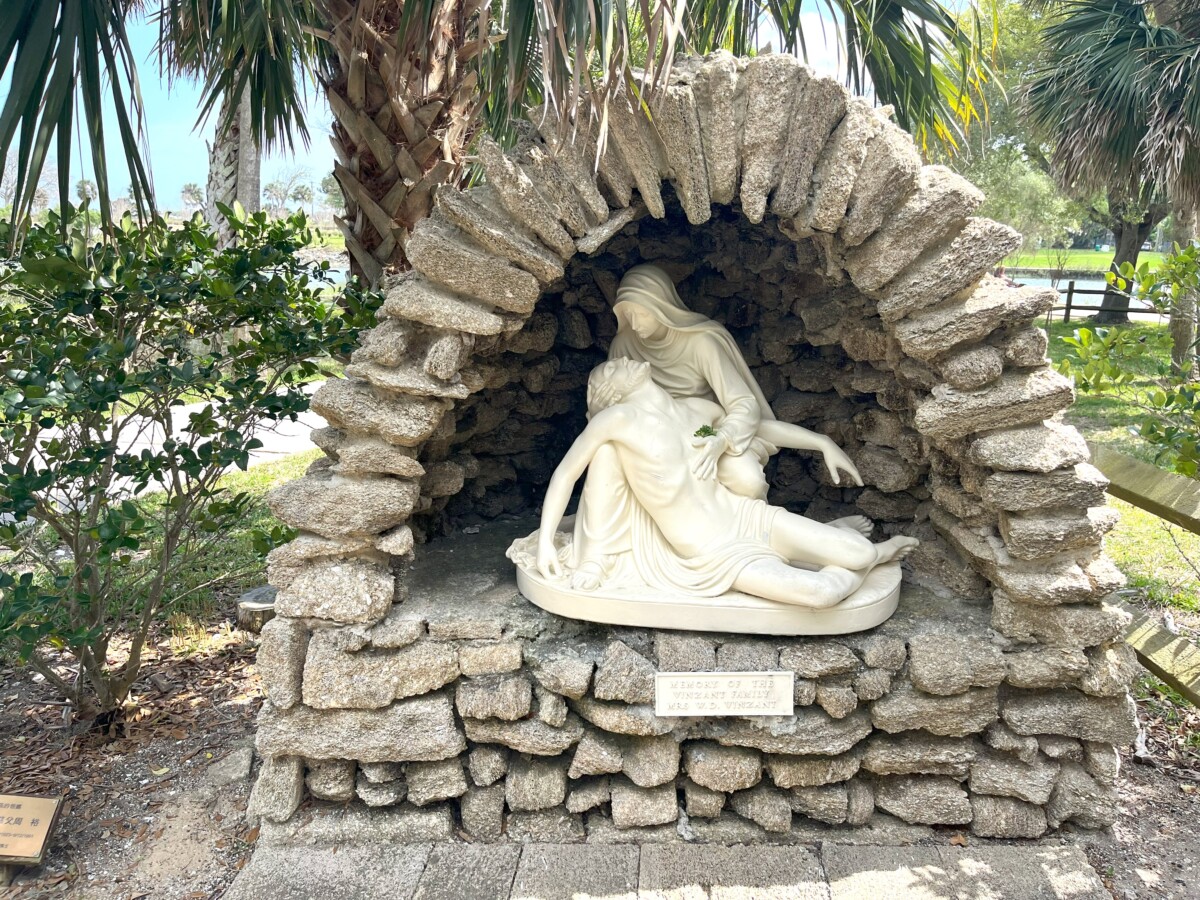Just north of St. Augustine’s Old City Gates lies the National Shrine of Our Lady of La Leche at Mission Nombre de Dios. We learned about the site on the trolley tour when we moved our daughter into her dorm at Flagler College. Fast forward a couple of years later when we explored the tranquil grounds.
On the “Sacred Acre” visitors can see the site of the first parish Mass in the United States. The grounds contain trails through a rosary garden, the 14 stations of the Cross, the seven sorrows of Mary, and a historic cemetery. Our Lady of La Leche also encompasses a church, historic chapel, museum, gift shop, and pilgrimage center.
History of Our Lady of La Leche
In 1565, Spain sent Pedro Menendez de Aviles to the New World with two goals: to drive out the French and to convert the Native American Indians to Christianity. Father Francisco Lopez de Mendoza Grajales accompanied Menendez to plant the first mission, Mission of Nombre de Dios (Name of God), at the site upon arrival. Dedicated to Nuestra Senora de La Leche y Buen Parto (Our Lady of the Milk and Good Delivery), the shrine is associated with an image of the infant Jesus nursing from his mother. Catholics from all over the world make pilgrimages to the site.
The Great Cross
In essence, this is the site of the first parish Mass and the birthplace of Christianity in the United States. To commemorate the 400th anniversary of this occasion, the diocese erected the 208-foot tall Great Cross, also called the Mission Cross. Illuminated by spotlights on the ground at night, the cross is best seen from the Matanzas Bay.
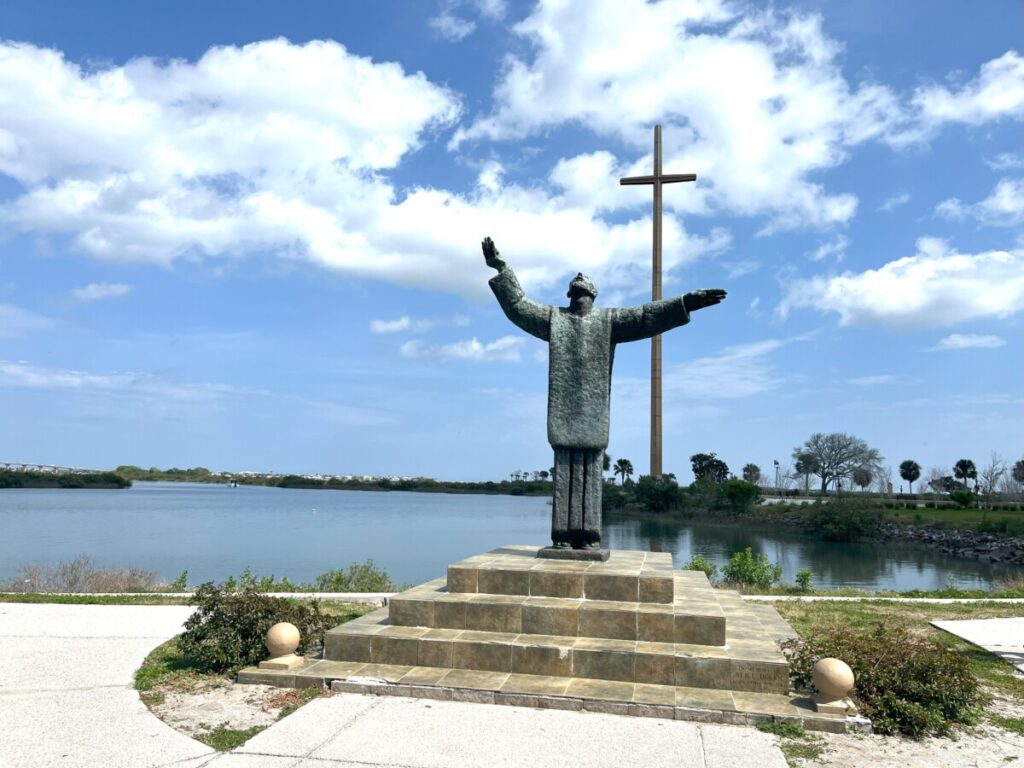
The 70-ton structure stretches taller than a 20-story building above the ground and remains the tallest Cross in the US. Engineers dug the base 30 feet below the ground to prevent the Cross from toppling during a hurricane. Visitors can also view wood carvings representing the Stations of the Cross along the pathways.
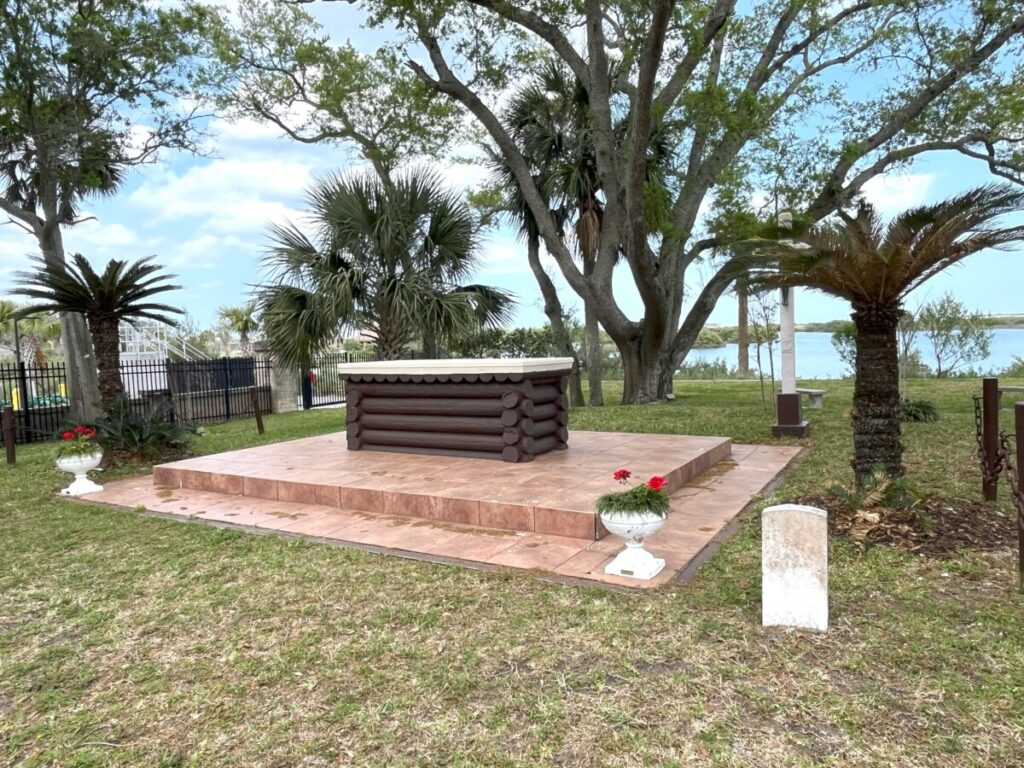
Over 50 years before the Pilgrim’s Thanksgiving at Plymouth in 1621, and the lesser-known Thanksgiving at Berkeley Plantation, Virginia in 1619, Father Lopez offered a Mass of Thanksgiving in St. Augustine before a wooden altar. Menendez and the 800 settlers celebrated with a meal shared with the native Timucuan people. The original wooden altar didn’t survive the elements, but a recreated rustic altar stands in its place.
Historic Chapel
No Spanish mission is complete without a chapel. A beautiful, ivy-covered historic chapel sits on the grounds, seemingly plucked out of a European countryside. This chapel, restored in 1915, is the fourth known building on the property. The previous chapel structures suffered attacks by enemies, harsh weather conditions, fires, and hurricanes.
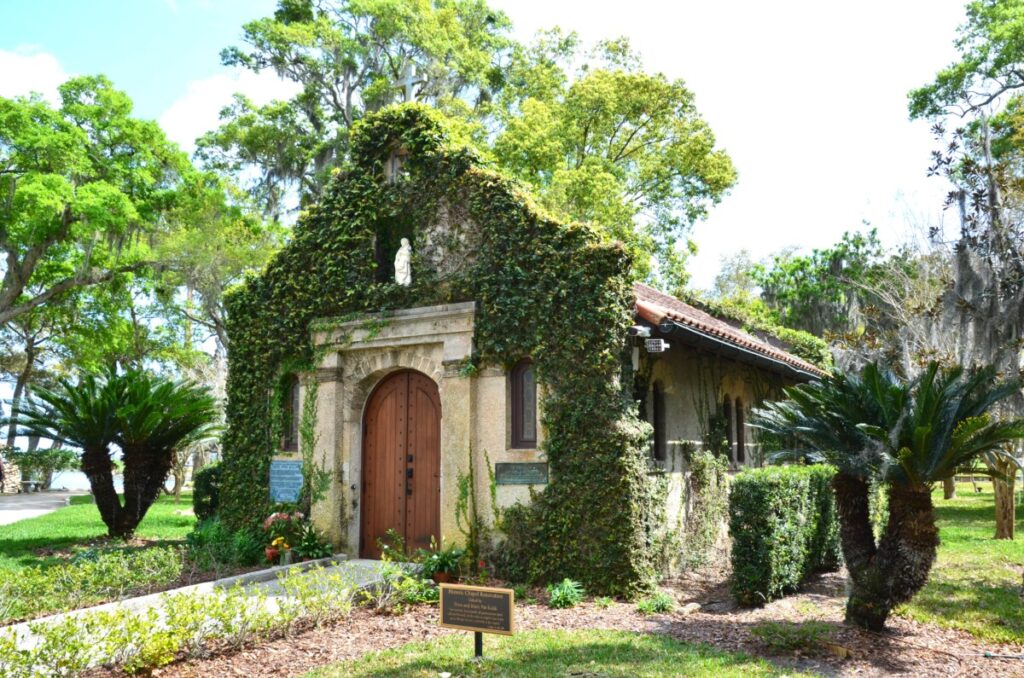
Inside the chapel, the focal point is the Shrine dedicated to Nuestra Senora de La Leche y Buen Parto, Our Lady of the Milk and Good Delivery as early as 1615. Spaniards brought the statue of Our Lady of La Leche (the infant Jesus nursing from the Virgin Mary) to the original chapel which held 200 people, making it the oldest Marion Shrine in the US.

In 2021, Pope Francis bestowed a Canonical Coronation to Our Lady of La Leche. In an elaborate liturgical ceremony, the Archbishop of Madrid, Cardinal Carlos Osoro Sienna placed a crown on top of the image of Christ and the Blessed Virgin Mary. This is a rare honor as only three other sites in the US have received this designation.
The Grounds
The 26-acre site offers a peaceful setting to encourage prayer and meditation. The meticulously groomed property along the Matanzas Bay provides multiple spaces for tranquility and solitude.
We walked paths taking us through the Seven Sorrows of Mary. Stone pillars featured carvings detailing Mary’s sorrows as she watched events occurring to Jesus. These sorrows include the Flight into Egypt, the Loss of Jesus in the Temple, and of course – The Crucifixion of Jesus.
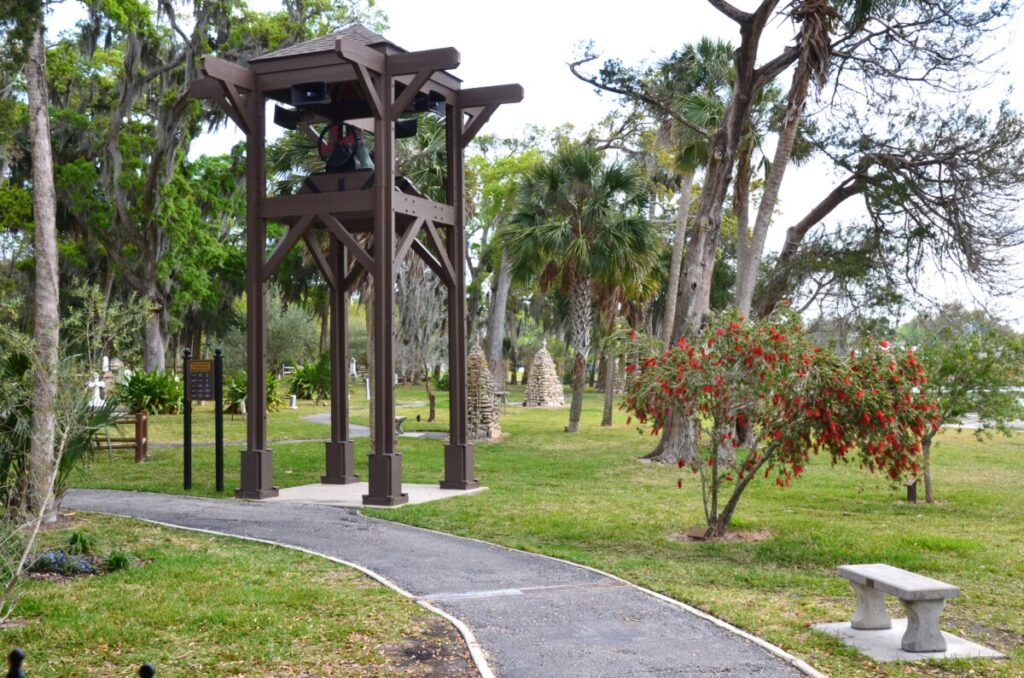
A cemetery sits under the oak trees draped with Spanish moss. Many parishioners from the late 19th century are buried here in addition to six soldiers from the Civil War from both Union and Confederate forces. Additionally, the cemetery is the burial site for the original Sisters of St. Joseph of St. Augustine who came from France in 1866 to teach former slaves how to read and write.
Rosary Garden
For the Canonical Coronation in 2021, the diocese added the Rosary Garden. At the entrance, a 7-foot crucifix made from cedar greeted us. The grounds suffered significant damage after Hurricane Matthew in 2016. The cedar used for the crucifix came from trees struck down on the grounds from the storm.
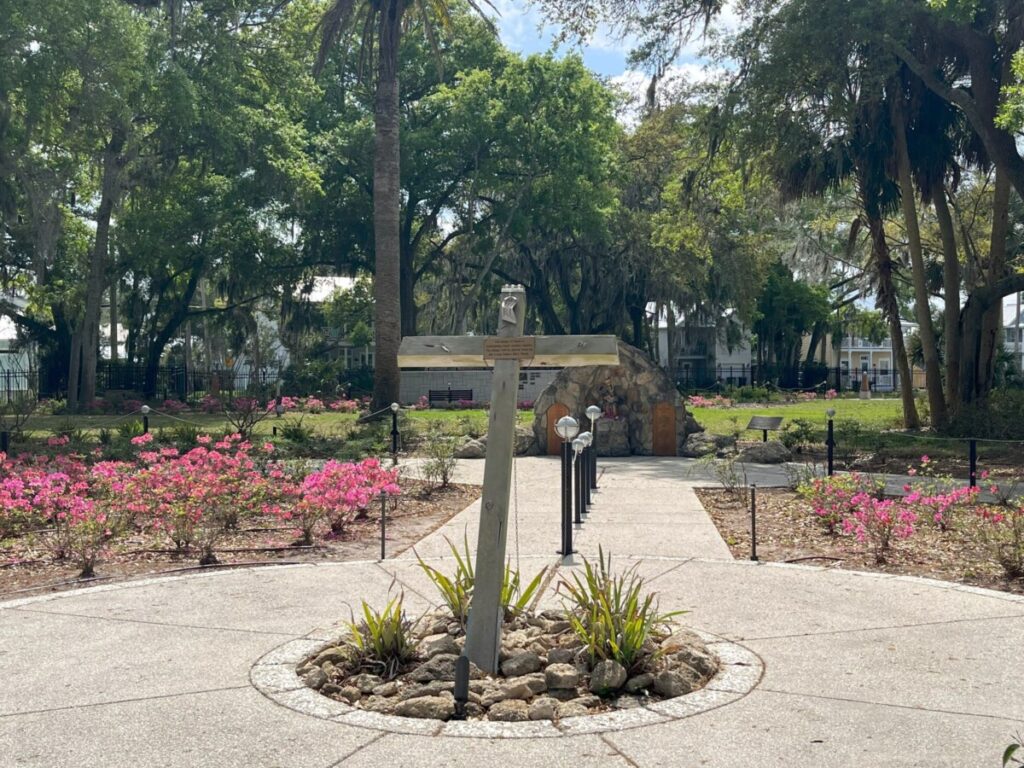
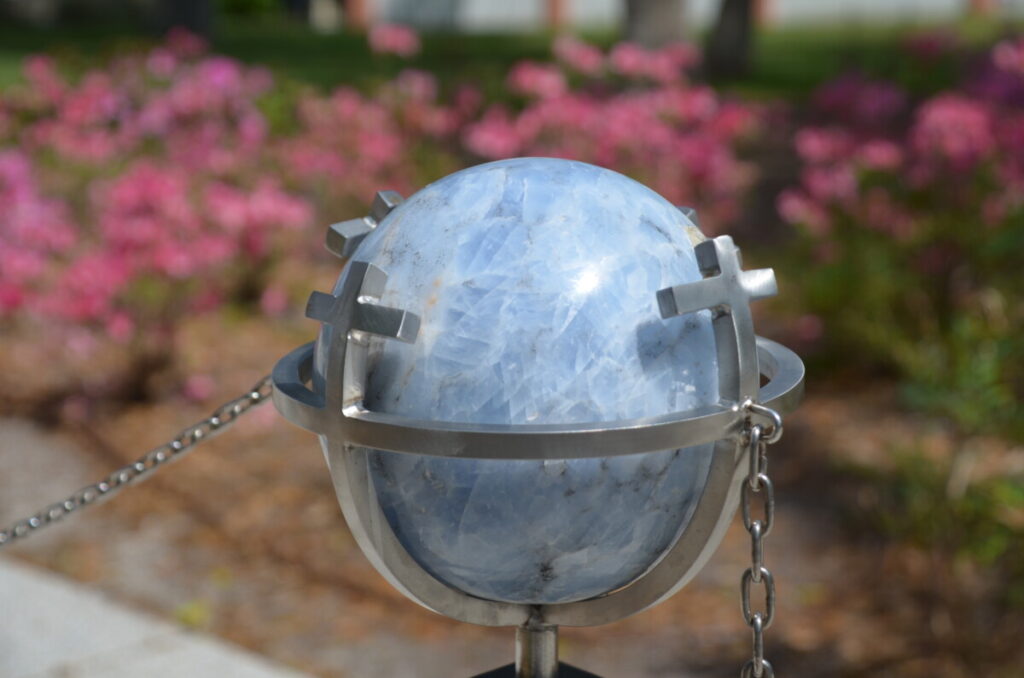
Stainless steel chains hung 30 inches above the ground, connect large rosary beads made from blue calcite. Every ten beads represent a decade. The five decades are the Annunciation, Visitation, Birth of Our Lord, Presentation at the Temple, and the Finding at the Temple. At each decade, an obelisk displays the scriptures corresponding to the Joyful, Luminous, Sorrowful, and Glorious Mysteries on each side.
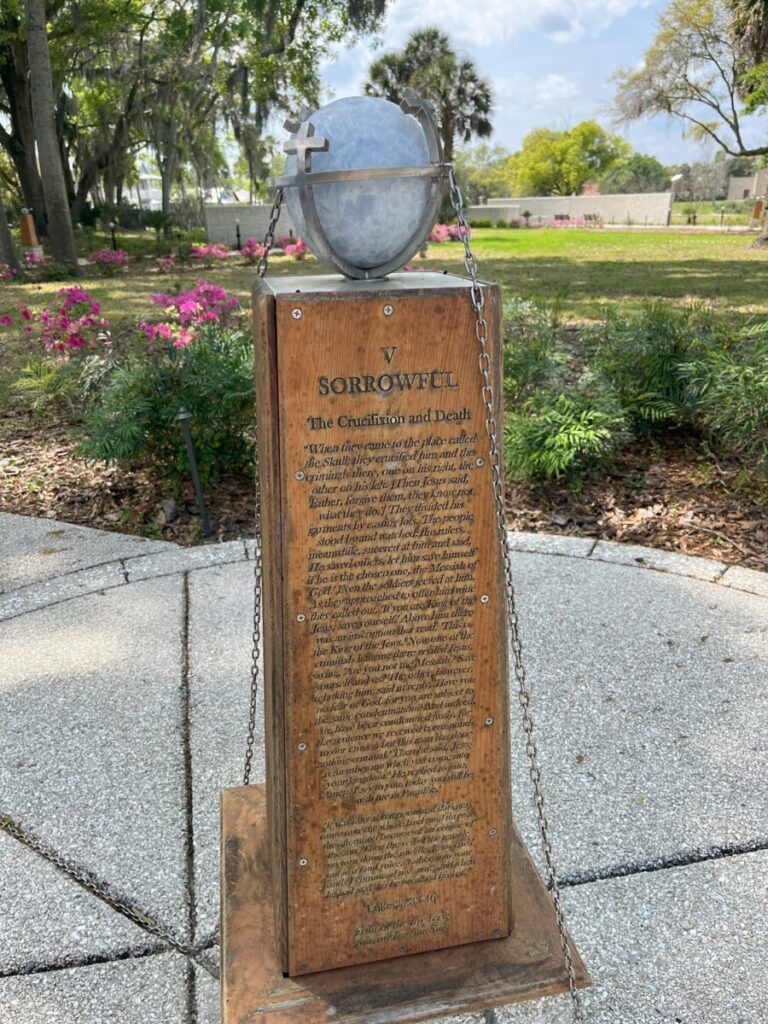
Pilgrimage Center, Pavilion, and Museum
Our Lady of La Leche offers a Pilgrim Center for meetings and retreats. Visitors can sit at the picnic tables in the attached open-air pavilion for views of the grounds and bell tower.
Next to the 240-seat Prince of Peace Votive Church (built in 1965 at the 400-year dedication) lies a museum. The small museum opened in 2010 and details the growth of the Catholic church in the US. Artifacts include the coffin of Pedro Menendez de Aviles, who died in 1674 in Spain, old letters, and maps. Next to the museum, a gift shop sells memorial candles, postcards, and other items.
In Conclusion
Our Lady of La Leche welcomes visitors of all faiths and backgrounds. Admission to the grounds and museum is free. Check the website here for hours, tours, and upcoming events.
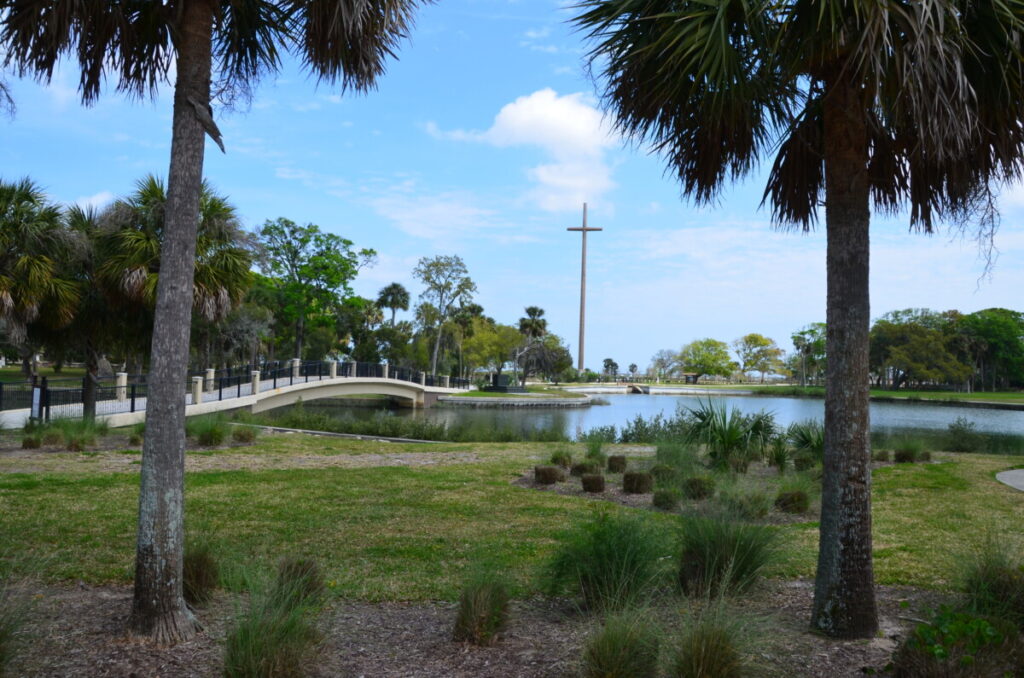
Although the grounds exude a park-like setting, dogs are not allowed.
